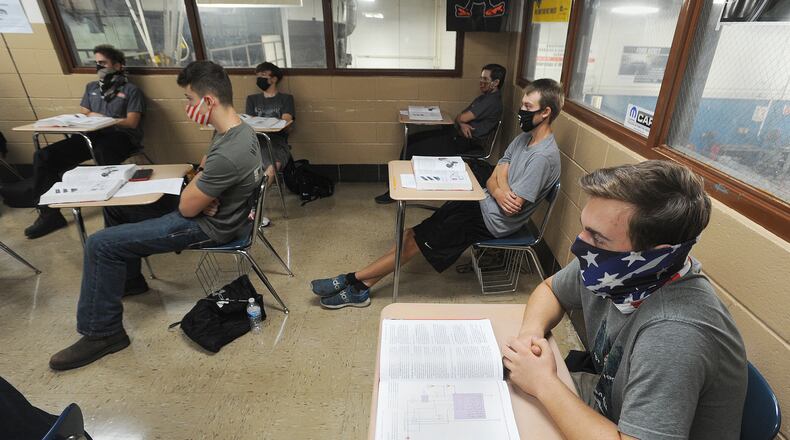Mad River, Centerville and Fairborn schools are among the districts with some students starting state English tests this week. Other districts, such as Huber Heights, are on spring break this week, and are waiting until next week to start, rather than splitting the tests before and after vacations.
For years, there has been debate over the value of the tests, with many local school districts arguing that the tests are not valid measures of learning, and that the results come too late to help, and that they waste time that could otherwise be spent teaching.
The Ohio Department of Education disagrees, saying the tests measure students’ growth and proficiency with Ohio’s specifically designed learning standards.
“These tests help guide and strengthen future teaching so we can be sure that we are preparing our students for long-term success in school, college, careers and life,” ODE officials said. “Test results also allow citizens to know how their local schools are performing compared to others around the state.”
In the past year, several legislators from both parties pushed a bill to cancel Ohio’s spring 2021 state testing, in light of COVID disruptions. But almost all state testing is federally mandated, and the Biden administration decided not to offer waivers. So the tests roll on, albeit with normal consequences for low scores removed this year.
Testing remote students
Thousands of Ohio K-12 students decided to continue learning online when their schools returned to in-person classes this year. But Ohio does not offer students the option to take state tests remotely.
Lebanon City Schools invited remote students to come in at scheduled times and take the tests separately from their in-person classmates. Third- and fourth-grade English tests were Tuesday, with those students returning for math tests Thursday. Other grades will follow the next few weeks, but the district is not pushing hard.
“We shared with (remote) families that there would be no consequences for not participating, " said Mark Graler, Lebanon’s director of curriculum and instruction. “For high school students not able to test now, they would be able to take the necessary end-of-course test (in) November/December.”
The Centerville, Northmont and Huber Heights districts are in-person four days a week, so they are offering state tests to remote students on the one day of the week when the in-person students are at home. Northmont and Huber will offer busing and lunch to those students if they wish, and Centerville said remote families can decline if they don’t want to send their students to school.
Kettering schools, which are giving most of their tests in late April, are asking remote students to test with the rest of their class, “if at all possible.”
“We also plan to (provide) testing opportunities on remote Wednesdays or during after-school hours, if a family is adamantly opposed to having their child test with his or her class on testing days,” spokeswoman Kari Basson said.
What tests, and when?
Ohio students in grades 3 through 8 take English and math state tests every year. They take science tests in grades 5 and 8. In their high school years, students take seven exams — English I, English II, algebra I, geometry, biology, American history, and American government — although English I has been phased starting with the Class of 2023.
Each state test is broken into two 75-minute to 105-minute sections. So an average student would have four or six test sections this spring, totaling 5 to 9 hours worth of testing.
The state testing windows run from March 22 to May 7 for English and March 29 to May 21 for math, science and social studies. Schools offering the tests on paper have to finish a week earlier. Each school can choose their run of testing days within the month-and-a-half state window.
Mad River schools echoed some analysts who said the tests are needed as a benchmark this spring, especially after last spring’s state tests were canceled amid COVID closures.
“We encourage all of our remote-only students to come into our buildings to take the Ohio state tests,” spokeswoman Jenny Alexander said. “We believe this will provide a data point for us to see where those students are in their learning after this unique year of instruction.”
About the Author

